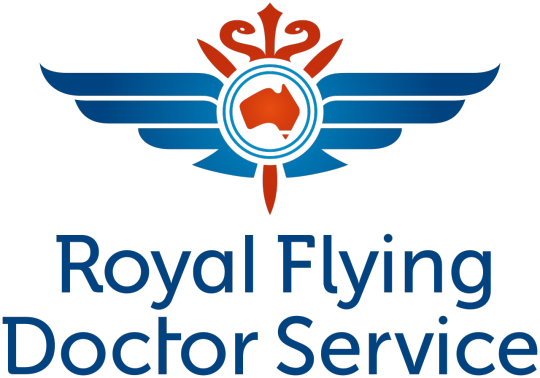#telehealth industry
Link
#market research future#telehealth market#telehealth market trends#telehealth market outlook#telehealth industry
0 notes
Text
Telehealth Market Segmented On The Basis Of Product Type, Delivery Mode, End-Use, Disease Area, Region And Forecast To 2030: Grand View Research Inc.
San Francisco, 7 Feb 2023: The Report Telehealth Market Size, Share & Trends Analysis Report By Product Type (Software, Services), By Delivery Mode (Cloud-based, Web-based), By End-use (Payers, Patients), By Disease Area, By Region, And Segment Forecasts, 2023 – 2030
The global telehealth market size is expected to reach USD 455.26 billion by 2030, according to a new report by Grand View…

View On WordPress
#Telehealth Industry#Telehealth Market#Telehealth Market 2022#Telehealth Market 2030#Telehealth Market Revenue#Telehealth Market Share#Telehealth Market Size
0 notes
Text
Revolutionizing Healthcare with Remote Healthcare Assistants
The healthcare landscape is rapidly evolving, propelled by technological advancements and the rising demand for more efficient patient care. One of the most significant changes is the increasing reliance on remote support.
In this context, remote healthcare assistants emerge as game-changers, offering a blend of expertise and technology to streamline healthcare services.
This guide will explore…
#digital healthcare solutions#healthcare automation#healthcare industry#Healthcare Technology#innovation in healthcare#medical assistance#medical professionals support#patient care#remote healthcare assistants#remote patient monitoring#telehealth services#Telemedicine#virtual healthcare support#virtual medical care
0 notes
Text
The Telehealth and Telemedicine Market encompasses remote healthcare services, leveraging technology for virtual consultations, monitoring, and diagnosis. It facilitates convenient access to medical expertise, especially in remote or underserved areas.
#Telehealth and Telemedicine Market#Telehealth and Telemedicine Industry#Telehealth and Telemedicine Market size#Telehealth and Telemedicine Market share#Telehealth and Telemedicine Market demands#Telehealth and Telemedicine Market growth#Telehealth and Telemedicine companies
0 notes
Text
Telehealth and Telemedicine Market: Top Key Market Trends 2023-2030

The global telehealth and telemedicine market is on the cusp of a transformative era, projected to reach a staggering USD 578.86 billion by 2030. This signifies a monumental leap from its 2022 valuation of USD 87.16 billion, with a robust Compound Annual Growth Rate (CAGR) of 26.7% anticipated over the forecast period (2023-2030), according to a recent market analysis.
Forces Fueling the Telehealth Boom:
Several key factors are propelling the telehealth and telemedicine market to new heights:
Rising Demand for Convenient Healthcare: Patients are increasingly seeking convenient and accessible healthcare solutions. Telehealth offers remote consultations, appointments, and monitoring, catering to this growing need.
Technological Advancements: Continuous advancements in telecommunication technologies, secure video conferencing platforms, and remote monitoring devices are accelerating telehealth adoption.
Improved Healthcare Access: Telehealth bridges geographical gaps, offering vital healthcare services to patients in remote or underserved areas.
Focus on Cost Reduction: Telehealth offers cost-effective alternatives to traditional in-person consultations, benefiting both patients and healthcare providers.
Growing Acceptance by Healthcare Professionals: Healthcare professionals are increasingly recognizing the benefits of telehealth for patient care and practice management.
Get Free PDF Sample Copy of Report @ https://www.snsinsider.com/sample-request/1792
Some of the major key players are Asahi Kasei Corporation, Medtronic, Koninklijke Philips N.V., Siemens Healthineers, Cerner Corporation, Cisco Systems, GE Healthcare, Teladoc Health, American Well, and other players.
A Deep Dive into the Market Landscape:
The press release can be further enhanced by incorporating a section on market segmentation, providing a more comprehensive picture:
Components: The market is segmented by components, including software and services for telehealth consultations, remote patient monitoring, and data management. Hardware components include specialized medical devices used for telehealth applications.
Mode of Delivery: Telehealth services can be delivered through cloud-based platforms or on-premise solutions depending on individual needs and infrastructure.
Applications: The market encompasses a wide range of applications, including teleconsultation, specialized services like teleICU (intensive care unit) and telestroke, teleradiology for remote image interpretation, telepsychiatry and teledermatology for mental health and skin conditions, and other specialty areas.
End Users: Healthcare providers, payers (insurance companies), patients, and other stakeholders such as pharmaceutical companies are all key end users of telehealth solutions.
A Global Phenomenon:
A section on the geographic landscape can be included to highlight regional trends:
The report explores the telehealth and telemedicine market across different regions, providing insights for geographically focused strategies.
Looking Ahead:
The future of the telehealth and telemedicine market is promising, with continued growth anticipated as technological advancements, growing patient adoption, and supportive government policies pave the way for wider integration of telehealth into healthcare delivery systems.
#Telehealth and Telemedicine Market#Global Telehealth and Telemedicine Market#Telehealth and Telemedicine Market Size#Telehealth and Telemedicine Market Share#Telehealth and Telemedicine Market Trends#Telehealth and Telemedicine Market Growth#Telehealth and Telemedicine Market Demand#Telehealth and Telemedicine Market Segmentation#Telehealth and Telemedicine Market Analysis#Telehealth and Telemedicine Industry Analysis
0 notes
Text
Top 6 Healthcare Trends to Watch in 2023 and Beyond

The healthcare industry is evolving, and it is important to stay up-to-date on the latest trends. The year 2023 brings forth an array of transformative healthcare trends that shape the future of medical practices and patient care.
We are observing a surge in personalized medicine, online pharmacy, virtual care, and many others, transforming the healthcare industry. These trends have paved the way for precision medicine, where treatments are tailored to individual patients based on their genetic makeup and specific health needs.
Also, AI-powered healthcare tools are empowering healthcare providers with advanced diagnostic capabilities and improved patient outcomes. While it is still in its early stages, it has the potential to revolutionize healthcare.
Online pharmacies are a recent and popular example, which shows the growing influence of technology in the healthcare sector. The online pharmacy market emerged a few years ago and is projected to surpass $261.684 billion by 2030.
Due to the emergence of AI(artificial intelligence), the industry is poised to undergo further changes in the upcoming years.
These trends include a range of advancements, such as remote and virtual care, the integration of artificial intelligence, patient engagement solutions, EHR software, and the utilization of healthcare data intelligence. These developments have the potential to reshape the way the healthcare industry operates.
Let’s take a closer look at some of the most innovative healthcare technologies that are being developed right now.
1. Telehealth

The COVID-19 pandemic played a significant role in accelerating the adoption of telehealth, which led to improved patient care. And the advancement of mobile /laptop devices has propelled telehealth’s rapid growth and adoption further.
Telehealth involves communication technology to engage with patients virtually. Furthermore, it allows patients to connect with healthcare professionals without leaving their premises, providing a convenient option for patients and doctors.
Furthermore, it significantly lower costs as healthcare institutions no longer need to invest in setting up physical resources, and healthcare professionals can enjoy increased flexibility and enhanced communication experiences. This mutually beneficial arrangement contributes to telehealth’s rising adoption and continued growth.
Benefits
Improved patient care through virtual engagement
Convenient access to healthcare from the comfort of home
Rapid growth and adoption due to advancements in mobile devices
Cost-effective alternative for healthcare institutions
Increased flexibility and enhanced communication for healthcare professionals
2. Internet of Medical Things (IoMT)

IoMT is a network of smartphones, wearables, and sensors that allows remote patient monitoring. These intelligent devices enable machine-to-machine communication that reduces the burden on healthcare providers. They can send your health and fitness data as per given instructions to make informed decisions.
As a result, many corporations are investing significant resources and capital into developing healthcare solutions, leading to the proliferation of wearable devices and integrated health applications within smartphones.
IoMT has the potential to replace the traditional way of monitoring healthcare as it dramatically enhances the monitoring experience.
Benefits
Real-time monitoring
Automated health report
Reduced costs
Remote assistance
3. Patient Engagement Market Solution

According to Accenture’s report, a majority of people have shown keen interest in technology-based digital solutions. This interest is particularly evident in the increasing popularity of technology-driven patient engagement solutions.
The market for digital patient engagement solutions is projected to experience a compound annual growth rate (CAGR) of 20.3% between 2021 and 2030. This signifies the widespread acceptance and adoption of these tools in the market.
Patient engagement solutions encompass various aspects of patients’ information management, including schedules and appointments. And, these tools can go the extra mile by delivering personalized content to educate patients. Not only do they serve as marketing tools, but they also play a crucial role in maintaining patients’ data and information.
Benefits
Automated appointment scheduling
Personalized content marketing
Effective communication with patients
Efficient data management of patients
Read more trends at https://www.brilworks.com/blog/healthcare-trends-to-watch/
0 notes
Text

Telehealth market size growth dynamics
1 note
·
View note
Text
Telemedicine – Growing with pace but yet to achieve mass adoption.
Tele dentistry and telemedicine have expanded immensely over a decade.
Industry experts indicate that telemedicine is a useful tool to connect remote and rural areas to the big hospitals and make the healthcare available and has a phenomenal scope.
Though the biggest challenge in the area is yet to overcome, i.e., primarily the mentality of patients and psychology of doctors about evidence-based medicine.
With many tech-based evolutions, ‘telehealth’ will be a game-changer in healthcare industry in upcoming years.
Read Full Blog Here: https://www.grgonline.com/post/telemedicine-growing-with-pace-but-yet-to-achieve-mass-adoption
The technology behind telemedicine—health care delivered remotely and asynchronously—has been improving for years. Tele dentistry and telemedicine are expanding quickly, and there is no looking back. In order to provide the best patient experience, healthcare systems and practices will need to offer this service.
Telemedicine is not going to replace in-person visits; it’s a way to triage that could help achieve better access to care and a lower cost of care. And employers are embracing telemedicine as a way to provide employees convenient health care at a lower cost for their companies. Industry experts indicate that telemedicine is a useful tool to connect remote and rural areas to the big hospitals and make the healthcare available and has a phenomenal scope; though it has few challenges to overcome, primarily the mentality of patients and psychology of doctors about evidence-based medicine.
According to a Survey of US Physicians in 2018, only 23% of patients have had video visits and just 14% of physicians have video visit capability. While video visits are only one aspect of telemedicine, these numbers make it clear that the technology still has not reached the point of mass adoption and use. Although, the gap between what you can and can’t do through a virtual platform is narrowing. Passive data collection via sensors and telehealth has already started to trigger important healthcare encounters, a trend that is poised to skyrocket with sensor innovation.
The use of telehealth technology to roll to a superior healthcare experiences with the mechanism of an optimal healthcare costs along with building a relationship among patients and healthcare provider. Thus, we believe that in next decade ‘telehealth’ will be a game-changer in healthcare industry, in the same way e-commerce and digital wallet changed the way we make payment and online shopping changed the way we shop.
Visit our website now: https://www.grgonline.com/

0 notes
Text

The age of information is upon us, and we are more than aware of the intrinsic working of healthcare services. Patients know what they want, and they expect high-quality treatment. But are healthcare services still playing catch up with the changing times?
This article delves into the idea of patient-centric care, a revolutionary new way of healthcare that is advantageous for all parties involved. Let's check, Patient-Focused Care: An Innovative Approach to the Healthcare industry with different functions.
If you are looking for a healthcare software development partner, EMed HealthTech is the ideal choice for you. You will find that we have the best technology, which can be customized to your needs to develop the best healthcare software for your facility. Reach out to us today to get started.
View Source:
#Patient-Centric Care#Healthcare industry#emedhealthtech#telemedicine#healthcare#telemedicine app development#telehealth#digitalhealthcare
0 notes
Link
#market research future#telehealth market#telehealth market trends#telehealth market outlook#telehealth industry
0 notes
Text
https://www.gavstech.com/multidisciplinary-nature-of-product-engineering/
Product development and engineering is a multidisciplinary field. It involves knowledge of programming, design, and marketing. It is a hands-on profession that requires creativity, technical knowledge and problem-solving skills.
#cloud managed services#customer experience#digital transformation in healthcare it consulting#healthcare industry digital transformation#telehealth services#business process automation in healthcare#digital transformation services and solutions#artificial intelligence#health data management#ai in healthcare
0 notes
Text
For those who didn't hear, in Florida, Senate Bill 254 which banned gender affirming care for minors, imposed stringent requirements of adults, mandating in-person consultations/prohibition of telehealth, banned puberty blockers for minors, rigorous informed consent, etc had more of its stipulations struck down.
June last year ('23), fed judge Robert L Hinkle was able to block the ban on beta blockers and hrt for minors as unconstitutional, concluding it was an exercise in politics and not medicine. This month, his rulings have been able to overturn the ban on medicaid coverage of gender affirming treatments. The ruling comes six months after a three-day trial for Doe v. Ladapo in which the court heard testimony from experts in psychiatry, endocrinology, medical ethics and pediatric medicine.
the remaining measures of the bill have to do with the prohibition of telehealth and the requirements to see a physician and undergo the psychological assessments. House Bill 1557, the don't say gay bill which was extended last year to include 4th - 12th grade is still in effect. Restroom restrictions in public gov facilities are still in effect, and gov officials/businesses are still able to discriminate against trans individuals, among other bills still targeting trans people.
There's still work to be done, but theres some good news and progress we're taking back. Stay safe, keep each other safe. More than ever, try to seek out your community, participate in organized activism, and build solidarity with other communities. mask up, be vocal about Palestine, and reject the prison-industrial complex.
63 notes
·
View notes
Text
On Tuesday, the Supreme Court of the United States will hear oral arguments in a challenge to abortion pill access across the country, including in states where abortion is legal. The stakes for abortion rights are sky-high, and the case is the most consequential battle over reproductive health care access since Roe v. Wade was overturned in 2022.
At the center of this fight is mifepristone, a pill that blocks a hormone needed for pregnancy. The drug has been approved by the US Food and Drug Administration for more than two decades, and it’s used to treat some patients with Cushing’s syndrome, as well as endometriosis and uterine fibroids. But its primary use is the one contested now—mifepristone is the first of two pills taken in the first 10 weeks of pregnancy for a standard medication abortion, along with the drug misoprostol.
If the justices side with the antiabortion activists seeking to limit access to mifepristone, it could upend nationwide access to the most common form of abortion care. A ruling that invalidates mifepristone’s approval would open the door for any judge to reverse the FDA approval of any drug, especially ones sometimes seen as controversial, such as HIV drugs and hormonal birth control. It could also have a chilling effect on the development of new drugs, making companies wary of investing research into medicines that could later be pulled from the market.
Pills are now the leading abortion method in the US, and their popularity has spiked in recent years. More than six in 10 abortions in 2023 were carried out via medication, according to new data from the Guttmacher Institute. Since rules around telehealth were relaxed during the Covid-19 pandemic, many patients seeking medication abortions have relied on virtual clinics, which send abortion pills by mail. And it keeps getting more popular: Hey Jane, a prominent telemedicine provider, saw demand increase 73 percent from 2022 to 2023. It recorded another 28 percent spike comparing data from January 2023 to January 2024.
“Telemedicine abortion is too effective to not be in the targets of antiabortion folks,” says Julie F. Kay, a longtime reproductive rights lawyer and director of the advocacy group Abortion Coalition for Telemedicine.
Tomorrow’s argument comes after a long, tangled series of legal disputes in lower courts. The Supreme Court will be hearing two cases consolidated together, including FDA v. Alliance for Hippocratic Medicine, in which a coalition of antiabortion activists filed a suit challenging the FDA’s approval of mifepristone, asking for it to be removed from the market. The Alliance for Hippocratic Medicine is represented by the Alliance Defending Freedom, a right-wing Christian law firm that often takes politically charged cases.
Despite decades of scientific consensus on the drug’s safety record, the Alliance for Hippocratic Medicine has alleged that mifepristone is dangerous to women and leads to emergency room visits. A 2021 study cited by the plaintiffs to back up their claims was retracted in February after an independent review found that its authors came to inaccurate conclusions.
In April 2023, the Trump-appointed judge Matthew Kacsmaryk of the Northern District of Texas issued a preliminary ruling on the FDA case invalidating the agency’s approval of mifepristone. The ruling sent shock waves far beyond the reproductive-rights world, as it had major implications for the entire pharmaceutical industry, as well as the FDA itself; the ruling suggested that the courts could revoke a drug’s approval even after decades on the market.
The US 5th Circuit Court of Appeals narrowed Kacsmaryk’s decision a week later, allowing the drug to remain on the market, but undid FDA decisions in recent years that made mifepristone easier to prescribe and obtain. That decision limited the time frame in which it can be taken to the first seven weeks of pregnancy and put telemedicine access, as well as access to the generic version of the drug in jeopardy.
Following the 5th Circuit ruling, the FDA and Danco Laboratories sought emergency relief from the Supreme Court, asking the justices to preserve access until it could hear the case. In its legal filing, Danco aptly described the situation as “regulatory chaos.”
SCOTUS issued a temporary stay, maintaining the status quo; the court ultimately decided to take up the case in December 2023.
As all this was unfolding, pro-abortion-rights states across the country were passing what are known as shield laws, which protect medical practitioners who offer abortion care to pregnant patients in states where abortion is banned. This has allowed some providers, including the longtime medication-abortion-advocacy group Aid Access, to mail abortion pills to people who requested them in states like Louisiana and Arkansas.
Though the oral arguments before the Supreme Court begin on Tuesday, it will likely be months before a ruling. Court watchers suspect a decision may be handed down in June. With the US presidential election in the fall, the ruling may become a major campaign issue, especially as abortion access helped galvanize voters in the 2022 midterms.
If the Supreme Court agrees with the plaintiffs that mifepristone should be taken off the market, some in the pharmaceutical industry worry that it will undermine the authority of the FDA, the agency tasked with reviewing and approving drugs based on their safety and efficacy.
“This case isn't about mifepristone,” says Elizabeth Jeffords, CEO of Iolyx Therapeutics, a company developing drugs for immune and eye diseases. Jeffords is a signatory on an amicus brief filed in April 2023 that brought together 350 pharmaceutical companies, executives, and investors to challenge the Texas district court’s ruling.
“This case could have easily been about minoxidil for hair loss. It could have been about Mylotarg for cancer. It could have been about measles vaccines,” Jeffords says. “This is about whether or not the FDA is allowed to be the scientific arbiter of what is good and safe for patients.”
Greer Donley, an associate professor of law at the University of Pittsburgh and an expert on abortion on the law, doesn’t think it’s likely that the court will revoke mifepristone’s approval entirely. Instead, she sees two possible outcomes. The Supreme Court could dismiss the case or could undo the FDA’s decision in 2023 to permanently remove the in-person dispensing requirement and allow abortion by telehealth. “This would be an even more narrow decision than what the 5th Circuit did, but it would still be pretty devastating to abortion access,” she says.
The Supreme Court could also decide that the plaintiffs lack a right to bring the case to court, says David Cohen, a professor of law at Drexel University whose expertise is in constitutional law and gender issues. “This case could get kicked out on standing, meaning that the plaintiffs aren't the right people to bring this case,” he says. “If most of the questions are about standing, that will give you a sense that that's what the justices are concerned about.”
As the current Supreme Court is considered virulently antiabortion, reproductive-health-care workers are already preparing for the worst. Some telehealth providers have already floated a backup plan: offering misoprostol-only medication abortions. This is less than ideal, as the combination of pills is the current standard of care and offers the best results; misoprostol on its own can cause additional cramping and nausea. For some providers who may have to choose between misoprostol-only or nothing, it’s better than nothing.
Abortion-rights activists have no plans to give up on telehealth abortions, regardless of the outcome of this particular case. “Let us be clear, Hey Jane will not stop delivering telemedicine abortion care, regardless of the outcome of this case,” says Hey Jane’s CEO and cofounder, Kiki Freedman.
“They’re not going to stuff the genie back in the bottle,” Kay says.
31 notes
·
View notes
Text
#Telehealth and Telemedicine Market#Telehealth and Telemedicine#Telehealth and Telemedicine Industry#Telehealth and Telemedicine Market size#Telehealth and Telemedicine Market share#Telehealth and Telemedicine companies#Telehealth and Telemedicine Manufacturers#Telehealth and Telemedicine Market growth
0 notes
Text
No. 46 - Royal Flying Doctor Service

In contravention of my normal operating procedures I've fast-tracked this request to the front of my queue because of how fantastically timed it is. It was requested the day my BermudAir post went up, and the moment I saw it I realized I was going to publish it as the next entry on this blog, because I want to highlight something really important and really positive about aviation. So thank you @alionessespride for the impetus to discuss why aviation is genuinely indispensable, regardless of what cynical things people might use it for.
My most recent post on BermudAir is definitely a major downer, and other posts I've done, like my David Neeleman special and various other assorted brief allusions, have been really distinctly pessimistic and jaded about the motivations of airlines. Which I don't regret or think is bad or wrong - these are very omnipresent specters in the airline industry, which is inherently more than a little predatory both due to its necessity for profit and its very heavy ties to the military-industrial complex, with airlines, governments, and manufacturers ending up in elaborate daisy chains of sweetheart deals and making money being sort of incompatible with anything I'd consider a virtue.
But I went on about this in my Neeleman post and sort of alluded to it with BermudAir as well - aviation isn't just that, and it's really hugely important. In addition to the sheer fact that people who live on islands or in remote places with poor infrastructure can easily access the rest of the world, aviation provides a lot of important services - weather research/surveillance, aerial firefighting, aerial inspection of things like power lines, agricultural work, greatly increasing the speed and thoroughness of search and rescue, and of course air medical services.
If you live in a major city you probably get a handful of ambient helicopters (I've been told a lot of people find them annoying because they tend to fly quite low), and if you've ever wondered what they are, they're probably medevac helicopters. There's a chance they're news, or private helicopters, or something else, but most of the time they're there to airlift people to hospitals if their condition is too dire to wait for the length of time an ambulance would take to get them to the trauma center, and a helicopter can easily land in a small, precise area and bring them there.
Which is all well and good, but that's for large cities. But most of the world actually isn't large cities. Case in point: most of Australia is borderline empty.

Most of Australia is on par with places like Alaska. While it's overall the fourth least dense country in the world, that density is wildly skewed and the best thing I can say for the dark green section is that it's still denser than Greenland, but not denser than Mongolia. Safe to say you aren't getting an ambulance if you live in there. So what if you have an acute medical problem which needs immediate attention to prevent your death?
The Royal Flying Doctor Service (RFDS) is probably the best-known aeromedical service. It was the first such organization, nearly 100 years old, established in 1928. They provide medical services, particularly in medical emergencies, to the parts of Australia where getting someone to a hospital would probably otherwise take days. They also provide telehealth services, transfer of patients between hospitals, and transport general practitioners to places which lack access to primary care, among other things.
The initial ask requesting them outlined a lot of this:
RFDS is an absolute lifeline in rural, regional, and remote Australia, staffed with flight doctors and nurses that fly out 24/7/365. Often they land on runways that are actually just roads or dirt strips, sometimes with the runway lit up for a night landing with rolls of toilet paper dipped in kerosene and lit on fire. They move patients that may be many many hours from any medical service, as first responders to an incident or as a medical evacuation service for small hospitals to big city hospitals.

It takes a special kind of skill to land a plane somewhere like this, and an even more special kind of skill to do paramedic work while someone is landing the plane you're in somewhere like this.
While initially RFDS just rented their airplanes and pilots from Qantas, these days they have their own fleet and pilots, and while it's hard to find exact numbers because of their several regional branches their planes number in the triple-digits and are mostly small-to-medium and capable of operation on very short, poorly-equipped airstrips (STOL). The most-used models are the Pilatus PC-12 turboprop, Pilatus PC-24 very light jet, and Beechcraft King Air 200 twin-turboprop.
They have a couple of different liveries, presumably varying by time and branch, so I'm going to stick with one I think is both more visibly distinct and more current.

Here's a fairly standard example of this livery. The 7NEWS sticker is, I believe, a sponsor - there are different ones on different planes. As you can see, the livery is primarily red, white, and blue, which I suppose is fair enough for a non-profit service in a country with a flag based on the Union Jack, though I still find it a bit of a pedestrian choice. That said, it's at least quite an ambulancey color scheme, though it's missing giant strobe lights and a siren. I think you could install those on a plane (I mean, strobe lights are actually mandatory, just not that type) but I feel like you also shouldn't, and this is better.

Here's a view from below, so you can see the clear and bright underside with RFDS emblazoned very visibly on it. Being easy to spot and identify is a broadly desirable trait in an emergency medical vehicle, and I love their specific choice in shade of fire-engine red. Note also the suspension on the landing gear and the weather radar on the wing facing towards the camera. The PC-12 is an incredibly designed aircraft which is popular for good reason, and is very well-suited to exactly what the RFDS is doing.

The white is used in a very interesting way, where the transition between it being a dividing line separating red from blue and the main body of the aircraft with the blue as just a swash is very very subtle, and the taper of the red is extremely well-executed. The red underside is excellent because it specifically prevents the blue and white from blending in with the sky, which wouldn't be ideal.
The Royal Flying Doctor Service and/or RFDS name is placed in three distinct places - the underside, the rudder, and above the windows. My gripe is that I wish they were a little bigger and more visible, I think. I'm not sure about the rudder, but I think a relatively easy fix would be to make the text above the windows bold and red - perhaps they just wanted to sequester the red fully to the bottom of the plane rather than having it on both sides of the blue, which I understand but don't think I fully endorse.

Another great view of how the red tapers, though, and the blue's termination just below the nose, far enough back that the end is still clearly visible behind the propeller. I've always felt like PC-12s (and similar single-prop aircraft but for some reason especially the PC-12) look like they have a moustache, and this adds a pair of whiskers. I enjoy that.

Admittedly, with the painted nacelles on the King Air something about it can begin to get a little...plastic-looking, I don't have any way to word it better. The blue in general isn't my favorite - unlike the saturated red's strikingness, it just sort of looks over-saturated in a way that I dislike. I'm not sure what would fix this. Maybe a darker blue?

Now, the RFDS's livery is by far the least worth-discussing thing about them. The service that they provide goes way beyond appearances, and because of that and because of the fact that designing liveries for smaller planes like this begins to get difficult I'm going to not be as harsh to them as I would other subjects. I'm just not really going to take into account the fact that this is a pretty generic scheme, because that's fine, there's no reason to care. My main takeaways are that the placement of the colors is quite well-executed, and that I wish the wordmark on the main fuselage body was more distinct. In photographs it's honestly downright illegible, and the text on the rudder doesn't exactly pop out either. The tailfin, in general, looks a little cluttered, like they didn't want to leave it empty but couldn't figure out what to do with it - the RFDS text doesn't even appear centered. But at the very least it's visible, which is crucial for an air ambulance service. Maybe I wish there was less white, but there's enough red and blue, and it's bright enough, so it's done its job.
That said, I'm giving them a C.

This is exactly what I expect of them. They've done a completely adequate job, and probably in a roundabout way it's good they've been spending their money on things that aren't genius graphic design. So if you have anything to take away from this post, don't have it be the grade, or even the fact that the Pilatus PC-12 is a really fantastic airplane - have it be the fact that aviation isn't just airline startups and massive conglomerates, and that it literally saves lives and provides services that we city-dwellers take for granted to people who would otherwise have to go without.

#tarmac fashion week#grade: c#region: oceania#region: australia#era: 2010s#era: 2020s#(earliest use of this livery I could find was 2013 but I'm sure it's older)#royal flying doctor service#non airline liveries#requests
26 notes
·
View notes
Note
is copywriting a good job to look into as a writer? im job hunting and i see quite a few openings online but im worried the work will be extremely dreary
i didnt set out to be a copywriter -- frankly when i graduated i had no idea what i wanted to do. i spent about three and a half years freelancing and doing gig work and i'd make like 140 bucks a month on a good year. i happened to apply for a copywriting job among a sea of other entry level things -- social media coordinator, communications associate etc. and i feel SOOOOO fucking blessed that i fell into copywriting
in terms of money: copywriting is very lucrative if you get the experience for it and stay the course. my very first position with no prior copywriting experience (just freelance writing experience) paid me 35/hr. starting off you'll probably make about 50k but moving up the hierarchy can pay a LOT. with four years of experience, during my job hunt i would say the vast majority of the positions i interviewed were within a six figure salary band. moving up the hierarchy, lots of senior copywriters make six figs, and some associate creative directors make over 200k. you can definitely live comfortably as a career copywriter if you play your cards right.
in terms of work: personally i love copywriting, but it's an arm of marketing. if you cant stomach writing marketing materials or learning how marketing works, it might not be for you, but i kinda make it into a game in my head. there's a lot of different kinds of copy -- short form (landing pages, social media blurbs, headlines, emails, product descriptions etc) and long form (white papers, SEO articles/blog posts, ebooks). i would aim to find a copywriting position that will have a wide scope of copy types, because that helps cultivate a well-rounded resume (i.e. shoot for a job that'll have you writing landing pages, emails and blog posts etc over one that's just headlines and captions).
there is also B2C (business to customer, as in marketing a consumer product to individuals) and B2B (business to business, as in marketing a product like mailchimp to a business). i mostly do B2C, but I also do B2B now. it's fine to start with just one, but i'd say right now demand is very high for B2B
the good thing about copywriting is that basically any industry requires it in some capacity. i've worked predominantly in entertainment and digital media, but right now i'd say the biggest demand is in healthcare, fintech and SaaS (software). i freelance for a telehealth company right now in part because i want to make my portfolio more well-rounded. but as i said, nearly any industry can need one -- hospitality, beauty, fashion, retail, nonprofits, anything that is a business that needs to be advertised. when i started, i worked in television, which meant my days largely consisted of watching shows before air and writing episode descriptions. i had a lot of fun!
personally, i dont find my work dreary. sometimes it can be a LITTLE tedious if i'm writing something more technical/internal, but the whole point of copywriting is to figure out how to entice someone to check something out, which means puzzling out how to write something fun and engaging. if you want something less marketing-focused, i would look into getting into technical writing. this is basically writing informational texts and guides for technology and similar things. it pays VERY well and is usually in high demand, but i will say it's definitely more tedious than copywriting.
in short: yes i love copywriting and you can be very financially stable in it! i'd argue it's one of the most financially comfortable day jobs for someone with writing experience. happy hunting anon!!!! i hope u get what ur after
10 notes
·
View notes